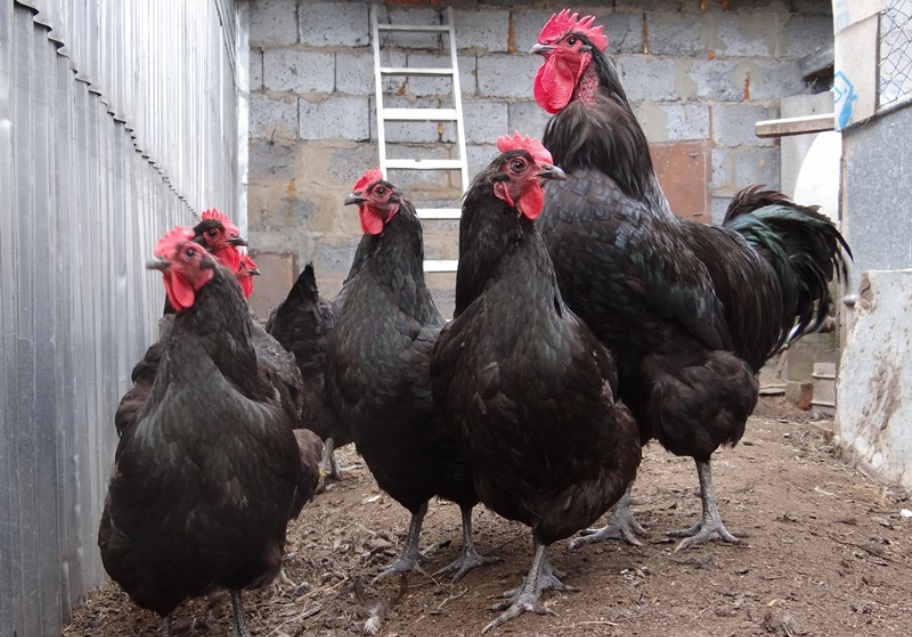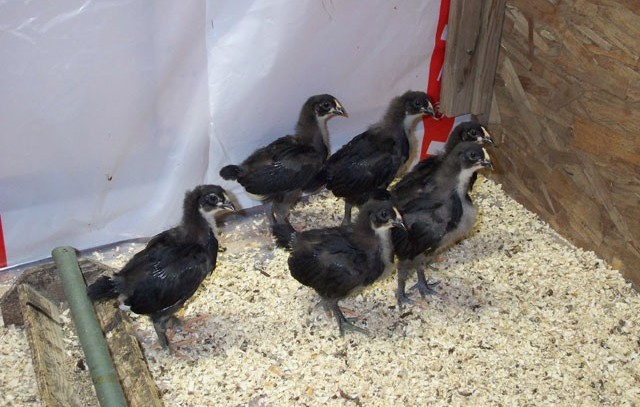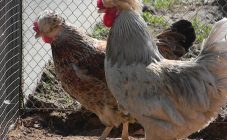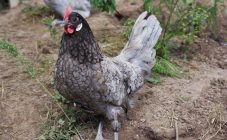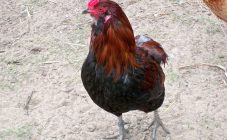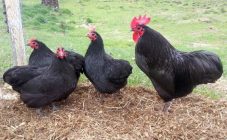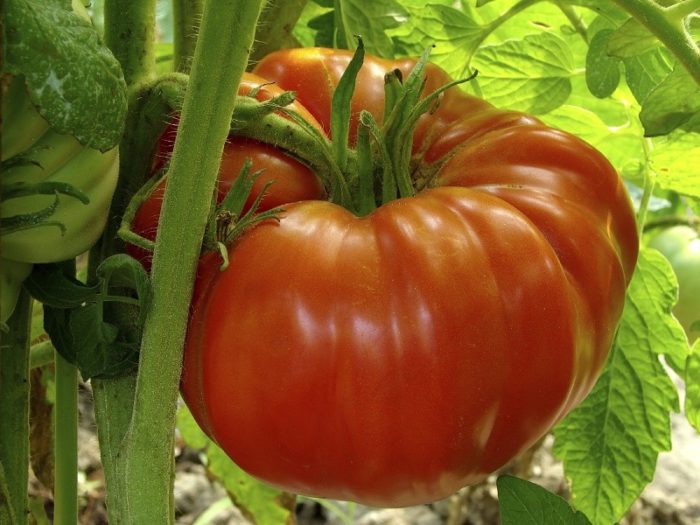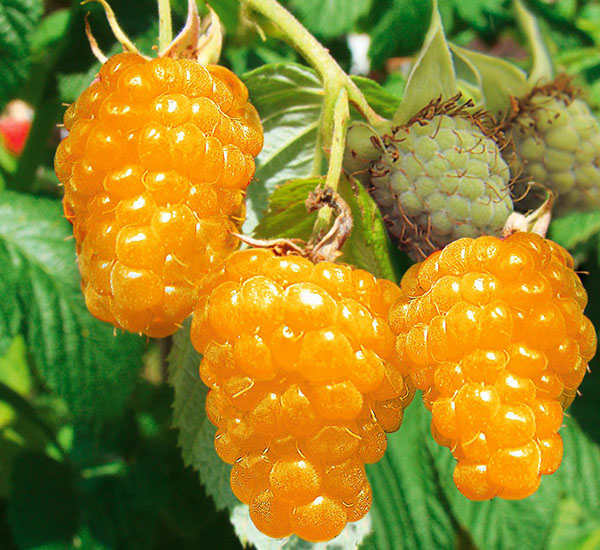Content:
Among all the varieties of chickens for meat production, the Jersey Giant breed is in first place - these are really giant individuals, there are no other such in the world. In addition to the large mass, Giant Jersey chickens have many other advantages: they are extremely hardy and quickly get used to new growing conditions. However, this breed is still rarely found in personal subsidiary plots. These giant chickens are not so difficult to keep, but all the rules of care must be followed in order to get a large amount of meat products as a result.
Jersey Giant: breed of chickens
For the first time they started talking about this breed at the end of the 19th century in the United States of America. It was there that the farmers created this giant among the chickens. To do this, they crossed black breeds of chickens - Dark Brama, Java, Orlington and Langshan. Subsequently, to improve the breed, they were crossed with Indian fighting chickens.
But the main specialist who brought the business of breeding the new giant chickens to the end was Dexter Uham, who was raising chickens on his site in New Jersey. It was he who first introduced people to the new giant breed of black chickens in 1915 and gave it a name. However, this breed was officially registered only after 7 years.
But even before the breed was officially recognized, it had already become popular with poultry farmers domestically and even abroad. First it was acquired by breeders from the UK, where they continued to work on its improvement. Then Jersey chickens got to Holland, then to Germany.
Later, giant chickens appeared in many countries of the European continent. For a long period of time, the color of the plumage of the chickens of the giants of Jersey was exclusively black. However, breeders from Great Britain, in the process of improving the Jersey Giant, bred birds with blue feathers (in 1982). And in Germany, chickens with white plumage were created (in 1992).
Unfortunately, at present, only breeders are engaged in breeding the Jersey Giants, it is almost impossible to meet them in private farmsteads.
Characteristics and features of the breed
Jersey giants - a description of this breed of chickens should begin with a story about their external features. Thoroughbred birds of this species cannot be confused with representatives of other breeds: massive downed giants proudly pace around the yard, protruding their wide chest forward.
The plumage of these chickens is very dense and dense, the tail is lush, the limbs are strong and strong, have a dark color. Against the background of black plumage, earrings, a beard and a six-toothed comb of bright scarlet color look beautiful. The comb is upright. The eyes are black, protruding and shiny. The beak is strong, but small in size, slightly bent downwards.
Today, there are several varieties of these giants:
- black - with dark plumage (with the exception of the crest and earrings);
- white - the color of the plumage of which is boiling white, the beak is painted yellow, and the limbs are gray;
- blue - their color is gray with a blue tint.These giants are the most beautiful representatives of the Jersey breed, their beak is bluish black, the limbs are almost black.
The main characteristics of the breed:
- the weight of adult females is up to 3.6 kg;
- weight of males - up to 6.2 kg:
- the onset of puberty - from six months;
- egg production - up to 175 pieces per year;
- pullet egg weight - up to 54 g;
- in adult chickens, the weight of eggs increases to 60 g.
Breeding features
Keeping them is not too difficult, but there are certain nuances that poultry breeders who decide to breed Jersey giants in their backyard need to know about. Chicks should only be purchased from reputable suppliers to avoid rejected chicks. But it is better to purchase a hatching egg - in this case, you can raise chickens as expected from the very beginning. For the first time, you should purchase so many eggs, which are enough for one bookmark in the incubator.
Newborn Jersey chicks are placed in a pre-prepared room where it is warm and dry. The main trouble for a chicken is a draft. There must be a thick bedding that absorbs moisture on the floor, as it is not changed during the entire period of chick rearing.
In the first 7 days, the chicks are fed at least 6 times a day, but gradually the frequency of feeding is brought to the adult diet. The first food for the chicks is hard-boiled yolk, which is finely chopped to make it easier for the chicks to peck at.
The next day, feed for chickens is added to the yolk. Sometimes farmers use it instead of bedding. After a few days, the boiled yolk is replaced with crumbly cereals and cottage cheese. Together with porridge, finely chopped greens are introduced into the diet of chicks. The feeders are cleaned after each feeding, as such food quickly sours.
After a week, finely chopped vegetables should be added to the porridge (preferably boiled potatoes and carrots). In the morning, add a few drops of fish oil to your meal. As the young grows, the amount of food increases. After a month, farmers can add fresh vegetables and more green mass to their diet.
Adult chicken food contains:
- wheat;
- corn;
- mixed feed mash with chopped vegetables;
- meal and cake.
In summer, these individuals should be released for walking, in places where green grass is always present. Being on a walk all day, chickens consume less food. They nibble the grass, look for worms and small insects. Chickens must have dishes with shell rock and crushed limestone.
Roosts must be kept low, as these giants cannot take off. The litter on the floor should be thick and soft to avoid injury when falling. It is best to use large sawdust, straw. The thickness of such a layer is not less than 10-14 cm. The nests for laying hens should be large enough to fit these huge individuals.
Thanks to the dense dense plumage, Jersey chickens calmly tolerate the cold season, do not reduce egg production. However, for the winter, it is better to insulate the house and provide for ventilation. There should be no drafts in the chicken coop.
Positive and negative qualities of the breed
The main advantages of the breed include:
- large meat yield during slaughter;
- the chick is gaining weight quickly;
- the taste of meat and egg products is excellent;
- quickly and easily adapt to living conditions;
- chickens have a well-developed maternal instinct;
- high resistance to diseases;
- the chicken has high vitality;
- the character of these giants is calm, without fussiness.
Among the shortcomings, the following should be noted:
- these large individuals require more space in the chicken coop and in the walking area;
- to raise healthy strong birds, chickens should be fed in a special way;
- after 12 months of age, the meat of these individuals loses its excellent taste.
These chickens often suffer from overweight, which negatively affects the positive characteristics of hatching eggs.
Jersey Giants' hatching eggs or hatching eggs are currently extremely difficult to obtain, so the price remains high.
